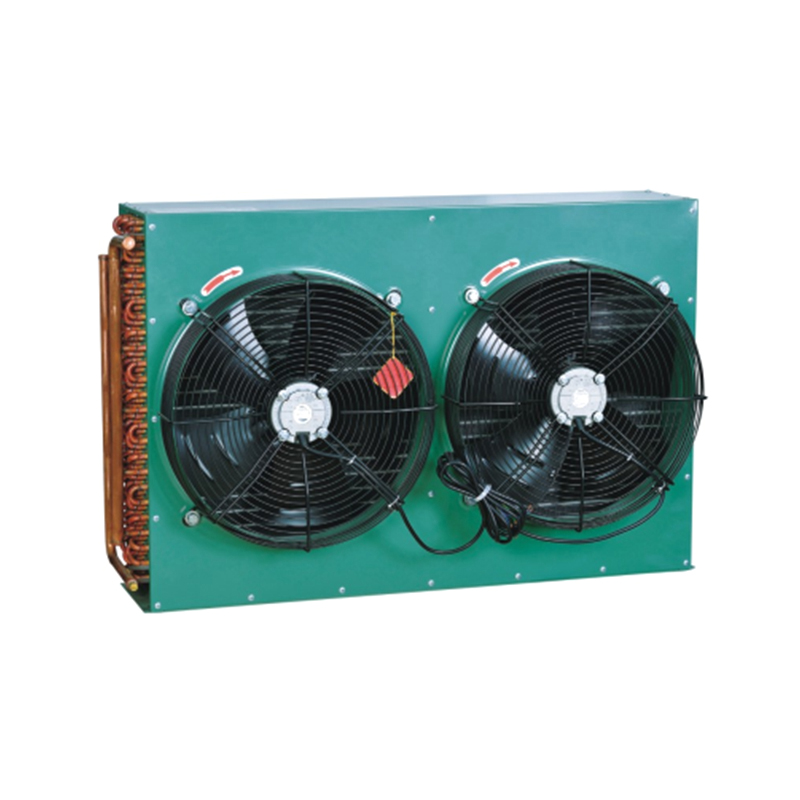Pressure control strategy of air-cooled condenser during tube expansion process
1. Understanding of pressure application mechanism
The mechanical tube expansion process applies pressure to the inner wall of the copper tube through a special tube expansion machine, causing it to expand outward and come into close contact with the aluminum fins. This process requires that the pressure must be uniform and gradually increase to ensure that the copper tube can deform evenly while avoiding excessive deformation or rupture caused by local stress concentration. Therefore, a deep understanding of the pressure application mechanism is a prerequisite for effective control.
2. Precise design and adjustment of tube expanders
High-precision pressure sensors: Modern tube expanders are usually equipped with high-precision pressure sensors that can monitor and feedback the pressure value applied to the inner wall of the copper tube in real time. These sensors ensure the accuracy and real-time nature of the pressure data and provide a reliable reference for operators.
Intelligent control system: Combined with high-precision pressure sensors, the tube expander uses an intelligent control system to accurately control the pressure. The system automatically adjusts the operating status of the tube expander according to the preset process parameters and real-time feedback pressure data to ensure that the pressure is uniform and gradually increases.
Mechanical structure design: The mechanical structure design of the tube expander is also crucial. Reasonable structural layout and precise transmission mechanism can ensure the accuracy and stability of pressure transmission and reduce pressure fluctuations caused by mechanical vibration or friction.
3. Refined operation of the expansion process
Pre-expansion treatment: Before the formal expansion, pre-expansion treatment is usually carried out. This step is to make the copper tube expand initially to adapt to the subsequent expansion process. Pre-expansion treatment helps to reduce stress concentration during formal expansion and improve the success rate of expansion.
Segmented expansion: For longer copper tubes, it is more appropriate to use segmented expansion. By dividing the copper tube into multiple sections and expanding the tube one by one, it can be ensured that each section of the copper tube can get uniform and gradually increasing pressure. This method helps to avoid the problem of local stress concentration that may occur during overall expansion.
Real-time monitoring and adjustment: During the expansion process, the operator needs to pay close attention to the changes in pressure data and make real-time adjustments according to the actual situation. Once abnormal pressure or uneven deformation of the copper tube is found, the expansion operation should be stopped immediately, and the operating status of the expansion machine and the quality of the copper tube should be checked.
4. Quality inspection and evaluation after expansion
After the expansion is completed, the condenser needs to be quality inspected and evaluated. The expansion effect is comprehensively evaluated through visual inspection, dimensional measurement, pressure testing and other means. In particular, attention should be paid to the contact tightness between the copper tube and the aluminum fin, the deformation of the copper tube and the heat exchange performance of the entire condenser. Products that do not meet the requirements must be repaired or scrapped in a timely manner.
Ensuring that the pressure is applied evenly and gradually increased during the mechanical expansion process is the key to improving the performance of the air cooled condenser. Through high-precision pressure sensors, intelligent control systems, refined operations, and strict quality inspection and evaluation, the expansion process can be accurately controlled to avoid problems such as excessive deformation or rupture of the copper tube. This not only improves the heat exchange efficiency and durability of the condenser, but also provides a strong guarantee for the stable operation of the entire refrigeration system.


